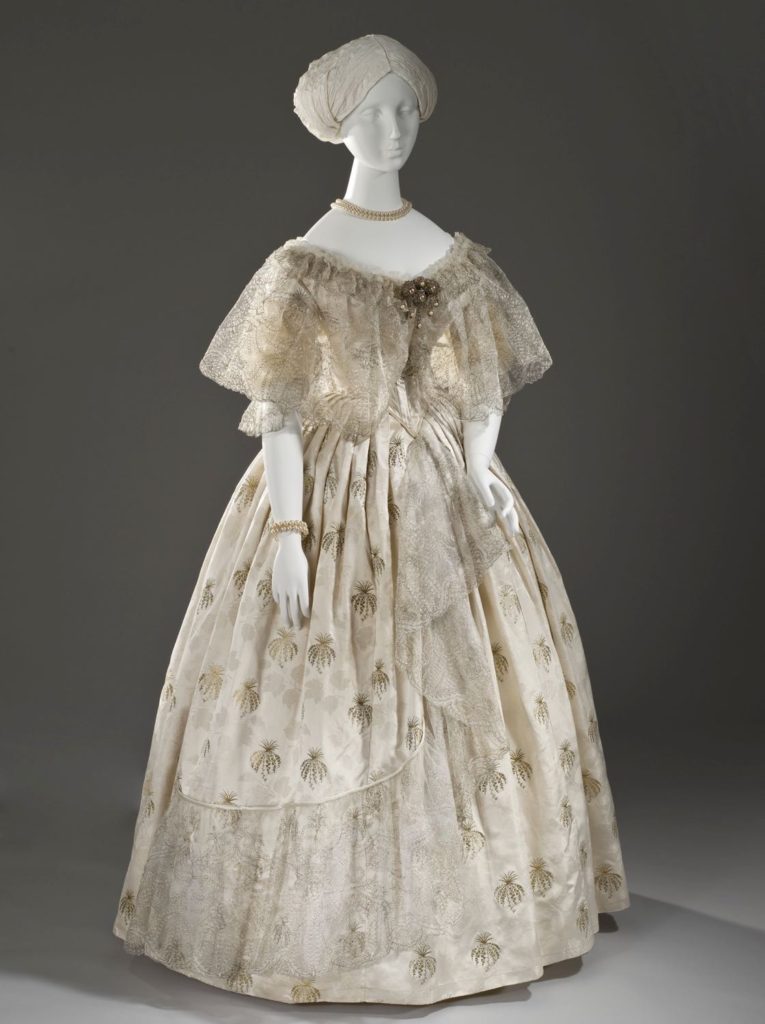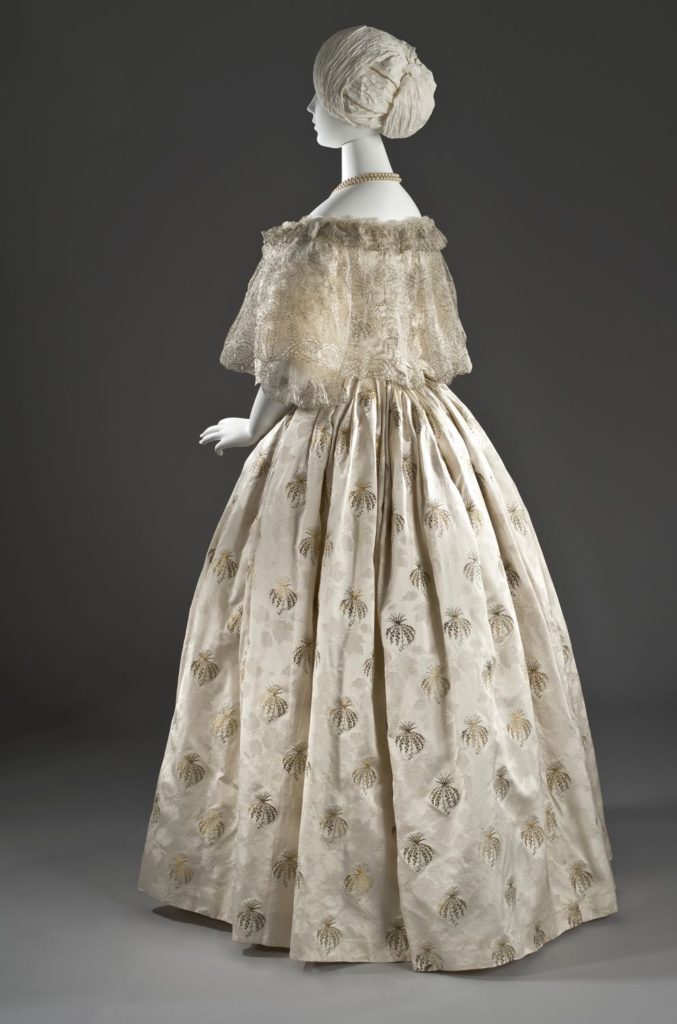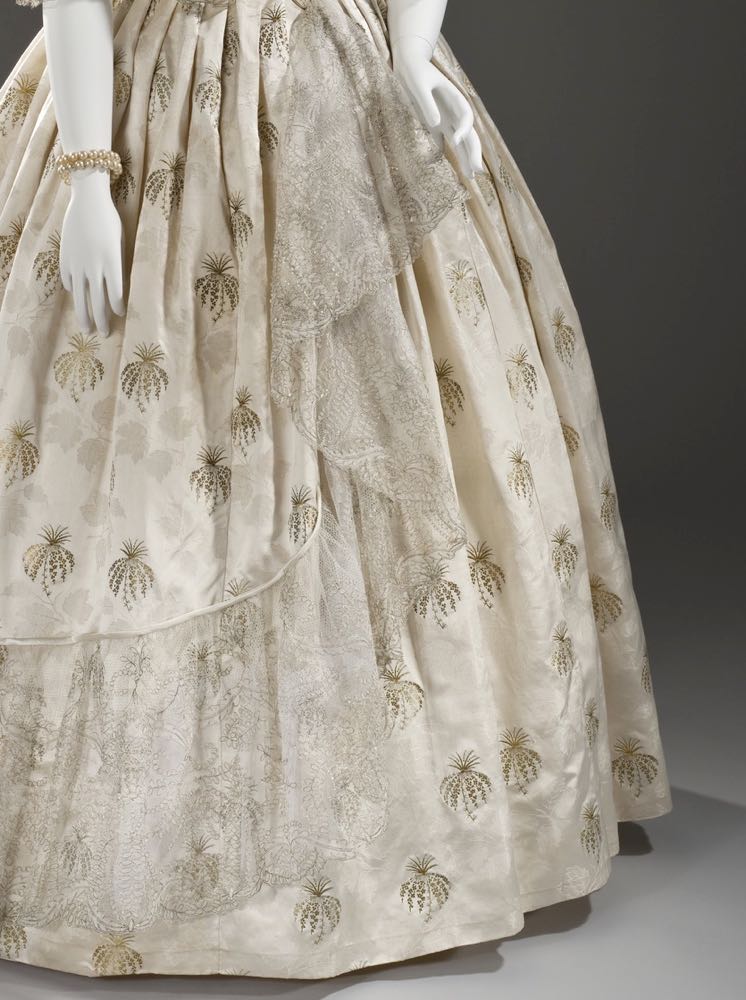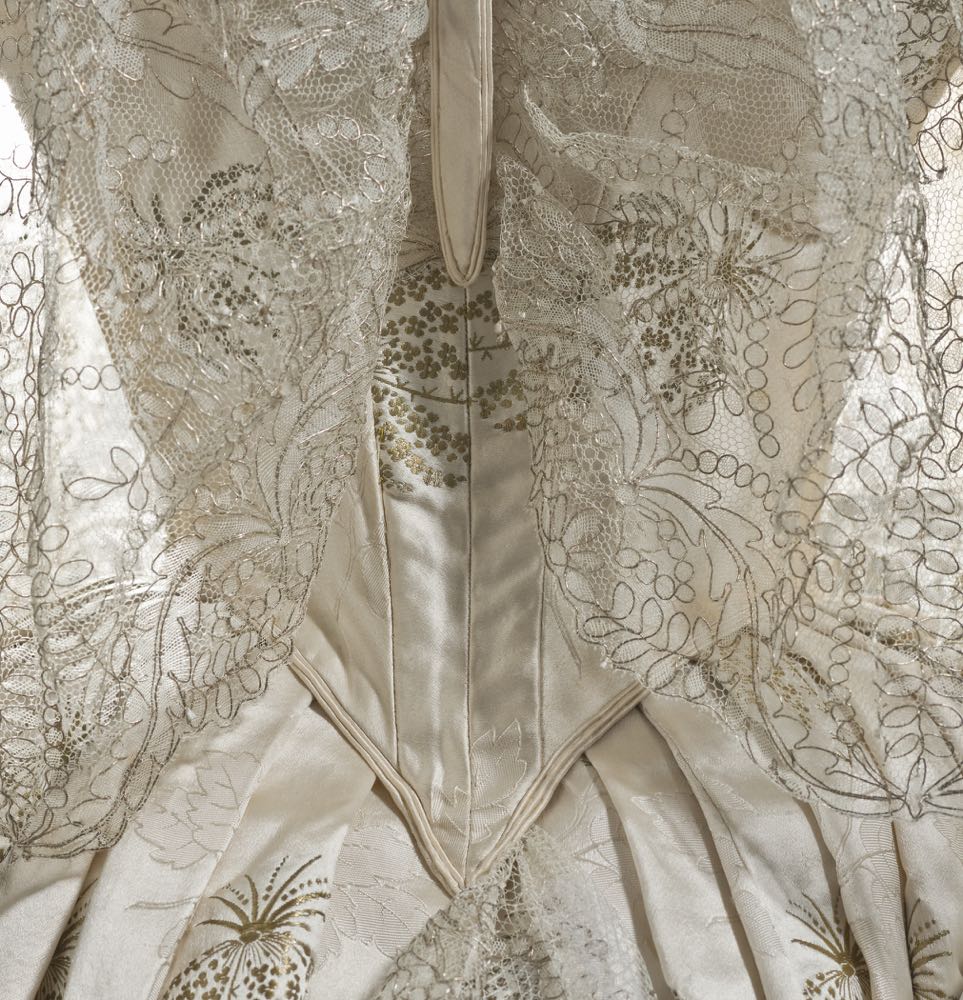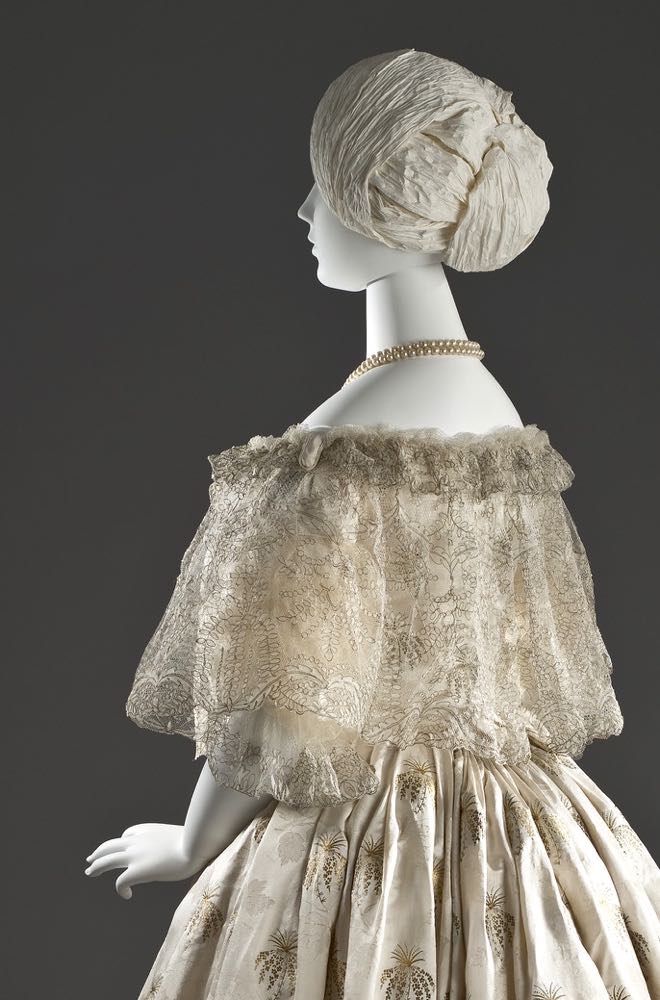In the sewing community May is Me-Made-May – a month of trying to wear more of the things you’ve made, using them to get out of wardrobe ruts, and setting yourself personal challenges around them.
I’ve never officially participated, in part because wearing stuff I’ve made every day is pretty much an obligation of my work, and what I wear cycles in response to what classes I’m teaching at the moment, what patterns I’m working on for Scroop Patterns, and the weather (which currently includes the first snow of the winter – yay (note sarcasm)). In bigger part, I’ve always been too busy with either the Sew Weekly, or the Historical Sew Fortnightly. Between sewing-teaching work, history-lecturing work, pattern-making work, running the HSF, and life, I’m one additional thing away from dropping all my balls – and I’m pretty sure that what I’m juggling is a mix of ostrich eggs in extremely fragile shells (some of which are well past their best-by date), newborn dragons (a la McKinley, where dragons are marsupials, so newborns are really squishy) and pressure-sensitive grenades. If I start dropping things, it’s not going to be pretty…
So…no mental space for setting myself more goals, so no getting to join in the fun and participating in Me-Made-May. One year I’ll have the time!
But, as a tiny bit of joining in, I thought you might like to see the earliest fully me-made item that is still in existence (I think):
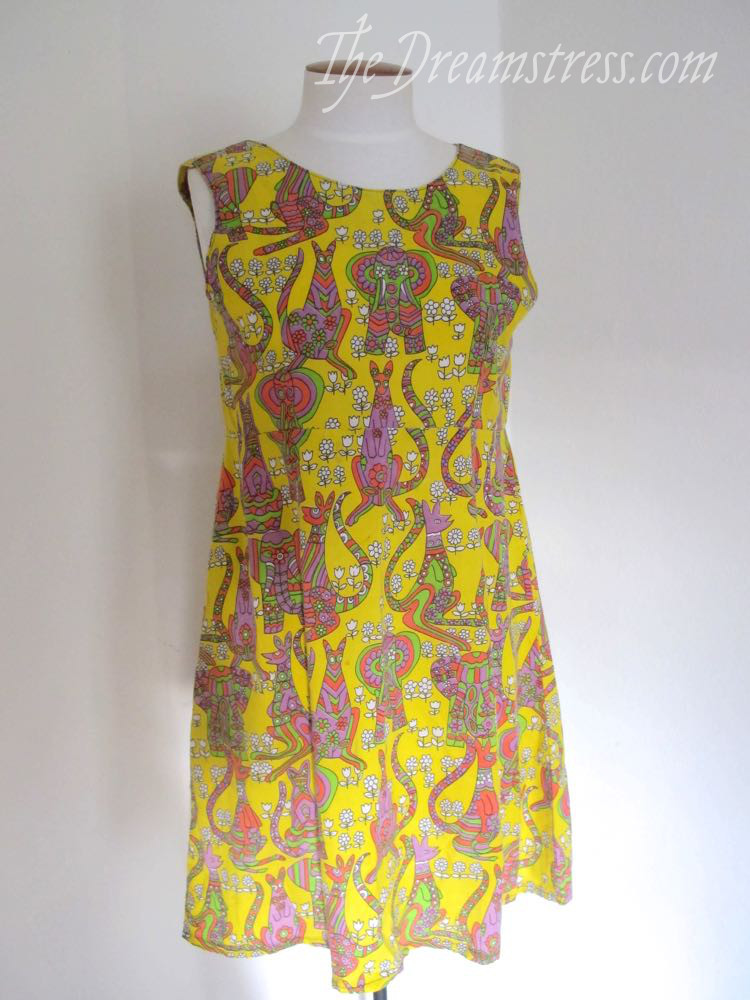
The very, very first item that I made, when learning to sew with the mother of a friend when I was 12 or 13, was a quadruple circle skirt gathered into an elasticated waist. I made it in lavender floral craft cotton. I can still remember the exact way in which Erin taught us to do rolled hems (the patience she must have had to talk two pre-teens through doing rolled hems on a quadruple circle!), and the gathering. Sadly, it was not cord gathering, and gathering in 4 full circles with thread may be the reason I hated doing gathering for years!
We followed up the circle skirt with a matching blouse with cut on sleeves (because what every lavender floral quadruple-circle-skirt with an elastic waist needs is a matching blouse of the same fabric).
I have no idea what happened to the blouse, but after I outgrew the skirt it lived on for many years as a cover for banana stalks on the farm. Bananas will sunburn, so after you cut a stalk, you have to cover it to keep them nice. A quadruple circle skirt is perfect!
The next few things I made were costumes & dresses for my sisters, and some stuff from patterns for myself that did not go well. But I persevered.
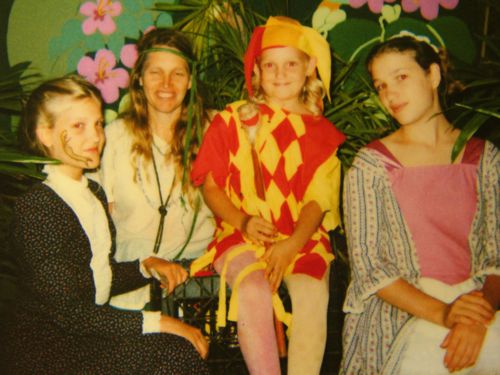
A proper Halloween picture: the naiad as a Victorian lady (with a naiad on her cheek), Mum as a 20s lady, Goldie as a jester and me in ’18th century’ – the last two made by me
Shortly after learning to sew, my grandmother passed away, and I inherited her fabric stash. I experimented with the less desirable stuff, and then started getting adventurous with the 1960s & 70s fabrics (I was too scared to touch the 40s & 50s stuff – thank goodness!).
And thus, this dress came about:
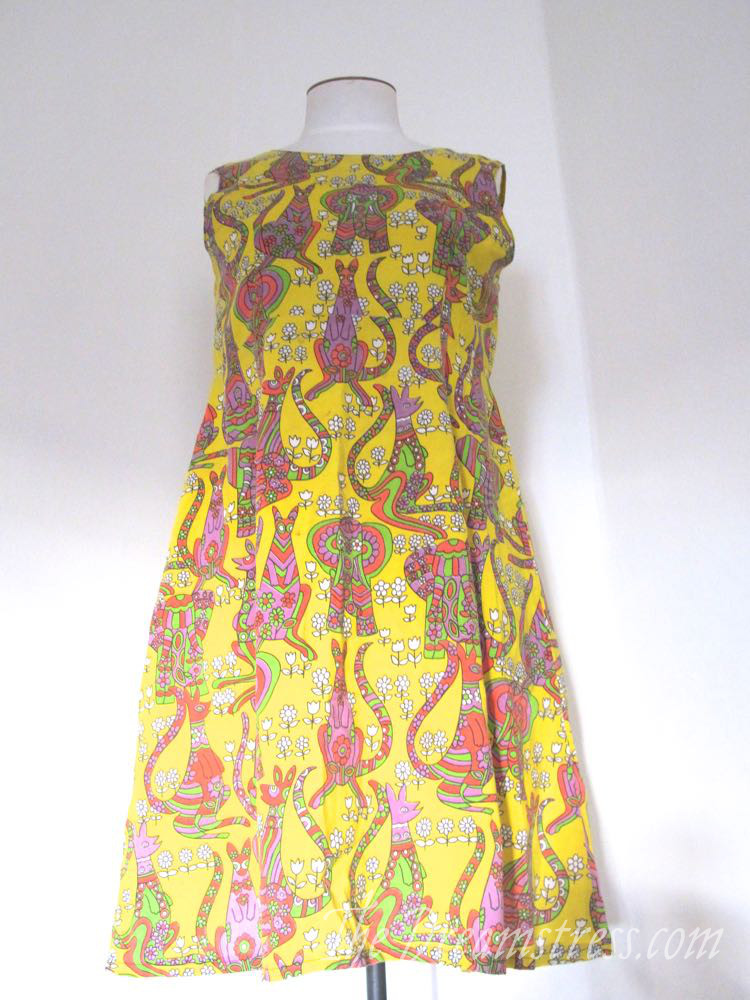
It’s not the first thing I made and wore, but it is the first everyday non-costume thing I made where everything about it was me-made – including the pattern. Frustrated with the poor results I was getting from commercial patterns, I measured a bunch of things I already had, and drafted this one from scratch.
It’s a very simple pattern – high waisted top with back and front darts, A-line skirt. And I was a very easy shape to fit at 15 – no bust or hips to speak of. But I’m still really impressed that I figured that out at 15!
I caused quite a splash at school in it. Everyone dressed in a specific-to-Hawaii cross between ’90s grunge and a dELIA*s catalogue (remember those?) – lots of blue-grey and khaki, but with surf-brand T-shirts, instead of ones with that monkey’s face on them. BRIGHT yellow psychedelic kangaroos and elephants kinda stood out.

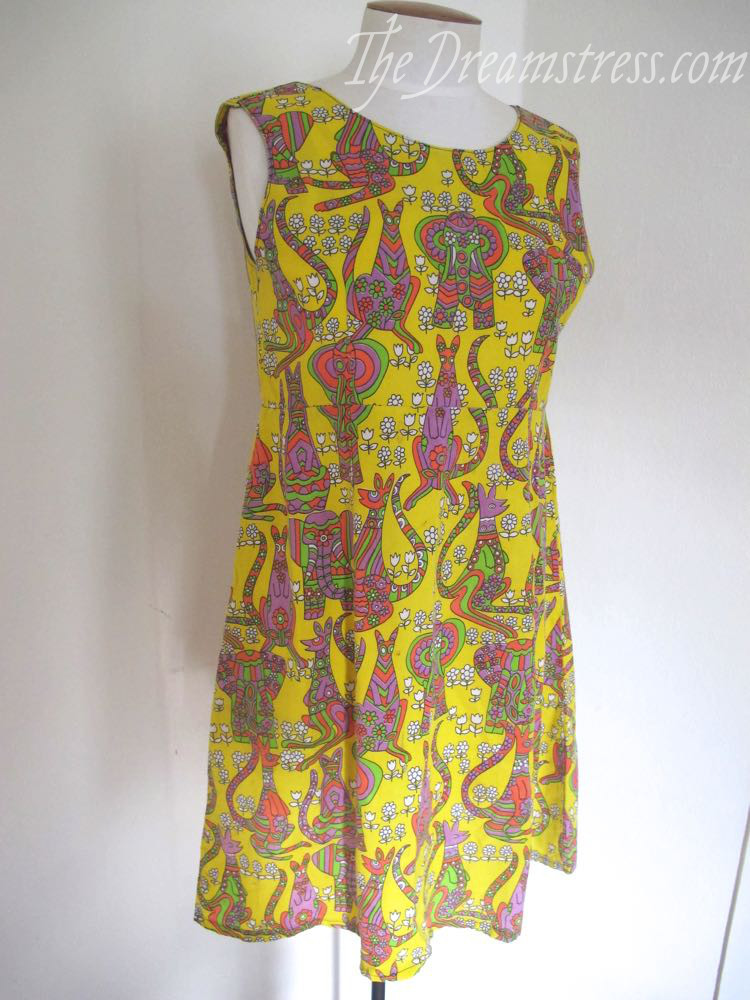
The sewing is very simple, and far from perfect, but still a very good effort for my age, and for taking the lessons I’d had, and pattern instructions, and the zip-insertion instructions on the zipper packets (remember when they still had instructions?), and turning them into a dress-from-scratch.
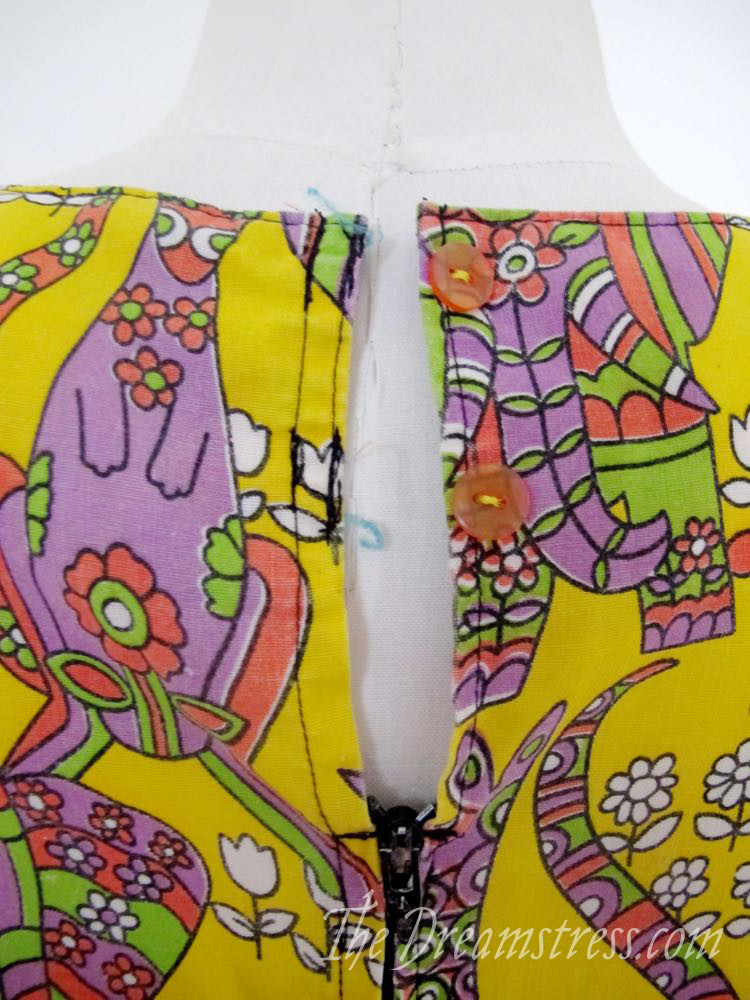
It’s sewn with black thread, probably because I didn’t have any yellow to match. I suspect I didn’t have a long enough zip, so came up with the button and loop solution on my own.
The one major mistake in the sewing that I noticed as soon as I had cut and sewn, and which bugged me then and continues to bug me, was at least a good learning experience:
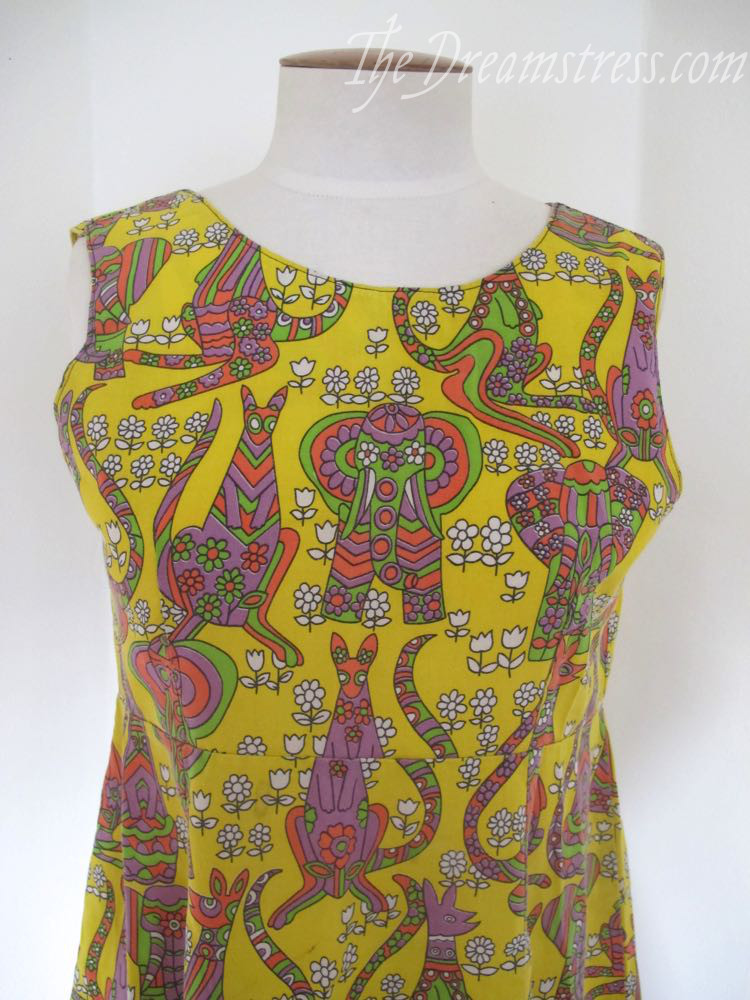
See the lack of pattern matching at the waist seam? Drives me CRAZY. The minute I sewed the waist seam, I couldn’t believe I hadn’t thought about it when I cut it. I have been very careful about pattern matching ever since.

The dress is fabulously obnoxious, and it made me happy then, and makes me happy now. It got a lot of wear in its time – it may even have come to university with me, though I can’t remember exactly. Sadly, there doesn’t seem to be a single photo of me wearing it. I can still get in to it, but it would be a stretch to say it fits. It would work really well if I ever needed a breast-compressing underdress for a very androgynous look!
I still have enough of the fabric left over to make another one (with proper pattern matching, natch) but I’m not sure I’m brave enough anymore.
Do you remember the first thing you made? Anyone else still have some of their very early me-made items?

